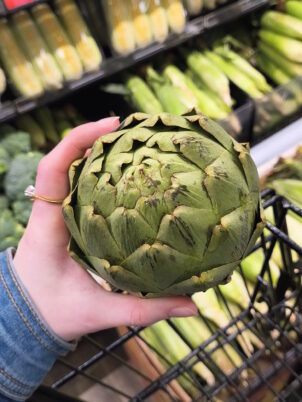Oh, You Teasel: Part 2
Part 2: The Not-Canadian Thistle
C. arvense: it takes away food but it also gives something back.
–Dr. Derek Faust, Plant Speed  Dating: Canada Thistle
Dating: Canada Thistle
Dr. Faust had a job with this plant ID guest on his YouTube channel, The Water Doctor. He had to break down a plant that was so badly mis-named it is an example of how not to science. Canada thistle, C. arvense, has a story that manages to incorporate the dramas of global shipping, the never-ending struggle to deliver clean food, and a large bit of xenophobia and international rivalries.
“…but our friends up north got blamed even though there’s evidence it arrived in the U.S. and Canada at around the same time. Thankfully, Ohioans weren’t involved in the name game; it could have been called “Michigan thistle.”—Joe Boggs
Canada Thistle, which is also known as Cursed Thistle, or Lettuce from Hell Thistle, is originally from Eurasia and North Africa. The plant is eagerly eaten by camels and goats, which does a lot to control its enthusiastic growth on a yearly basis in its native territories. Canada was put in the name-blame-game because it popped up below the Canadian border through (it is believed) contaminated grain and seed shipments from France. The political climate of the time was all too eager to put the blame on anything on the French and by proxy, Canada.
arvense is invasive even where it is a native. Incalculable funds are spent yearly in control because it is just so successful in fouling our primary cereal crops like maize [American corn], wheat, barley and rye. By these actions it is reluctantly–most reluctantly–granted the honor of being one of the most important plants in global agriculture.
Still, good news
It didn’t take long for the Indigenous peoples, and the newcomers who already had experience with thistles in their culture, to make the best of the situation. The Cherokee used the fluff as tips for their blowguns. The Mohegan made a medicine for their infants with C. arvense, and it became known as a toothache pallative. Canada Thistle has a small value for the florivore and nectarvore animals: creatures that eat the flowers and take the nectar are equally attracted to the tops. Humans sometimes encourage honeybees to feed on them, for the result is a strong-tasting honey that works well with powerful-tasting cheeses and breads. The flavor profile is described as robust and earthy. The flowers themselves are also used in botanicals: Scotland’s Islay distillery lists the thistle as a component in their famous gin, The Botanist.

Blessed thistle
In the thistle family, Blessed Thistle is the relative who went to med school. This strain is employed in traditional methods for a variety of conditions like Lyme Disease and supporting the liver. The blessed and milk comes from its ancient use in helping mothers produce milk for their newborns.
How to eat a thistle: very carefully.—Benjamin Lorde
Cardoon: prickly, pricey, and ethical
My husband says “cardoon” sounds like something out of The Lord of The Rings. I say it’s more like Deep Space 9.—Laughing Duck
Cardoon is the lesser-known edible thistle in North America. It still enjoys a culinary tradition that dates back thousands of years in Europe. In Spain, Portugual, and surrounding countries the flowers are still harvested for cooking, and to make a vegetable rennet, a priceless element in the art of cheesemaking.
Rennet exists in two forms: the most common is a piece of stomach from a calf still nursing. This requires the death of the calf, which can be controversial. The alternative is ‘vegeterian rennet’ which is made from plants like cardoon. In either case, rennet in some form is needed to coagulate the milk to make the cheese.
Anyone who has sampled cardoon-coagulated cheese knows it adds a slight bitterness to the otherwise sweet, slightly salty product. This is not considered a drawback, but rather, a desired addition to the depth and quality of the meal. Some are considered among the greatest cheeses in the world.
Cardoon is a non-negotiable ingredient to some of these cheeses because they have attained legal protected status of cultural importance, such as the Queijo de Nisa. This cheese is aggressively protected by law and cannot be legally manufactured outside of the subregion of Nisa, or without sheep’s milk and cardoon flower.

By itself, the cardoon as a vegetable is a vital component for holiday meals among the Mediterranean cultures. After the scandals of The Artichoke King in the Roaring 20’s it is a little startling to know cardoons are showing signs of repeating history: as the valued vegetable returns to the culinary spotlight, the prices are rising.
Disorganized crime
Hard as it is to believe, the artichoke thistle has a wild history with organized crime, thanks to a collection of events. In simple terms, Italian-American immigrants discovered they could grow artichokes easily on the West Coast. But the vegetables were worth about five cents. In modern terms, it was worth half a loaf of bread, or a pack of chewing gum. On the East Coast, the artichokes were not nearly so available, but people were willing to pay as much as a dollar for them if they were feeling very homesick. It was not long before a cutthroat mafia boss, Ciro Terranova, decided to be his own middle-man and take control of the farm to table rates. He cajoled and threatened the growers into selling their vegetables, and shipped them to the East for high prices. Eventually, things grew bad enough that New York had to actually outlaw artichokes just to get a breathing space so they could cork the situation. In a relatively quick time, the artichokes returned to being a politically-neutral food, and the Artichoke King lost his throne.